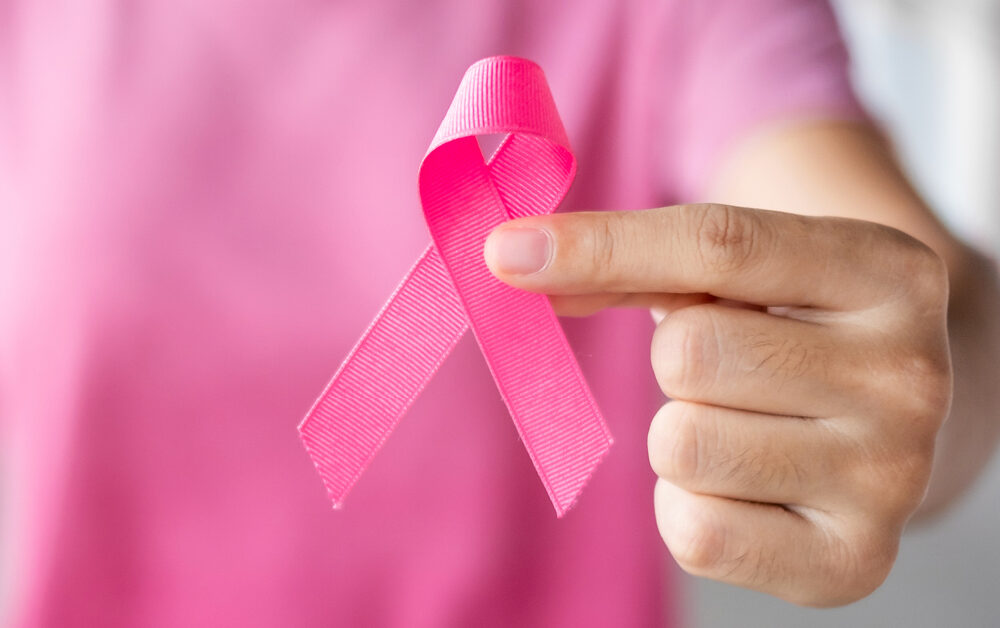
Recovery Spotlight – 1910
February 2022
Gender Matters: Understanding the Differences in a Woman’s Heart
February 2022The American Cancer Society has updated its guidelines on diet and physical activity for cancer prevention. Maintaining a healthy weight, staying active throughout life, following a healthy eating pattern, and avoiding or limiting alcohol may greatly reduce a person’s lifetime risk of developing or dying from cancer. At least 18% of all cancer cases in the U.S. are related to a combination of these factors. These lifestyle habits are the most important behaviors after not smoking that people can control and change to help lower their cancer risk. The updated guidelines reflect the latest evidence published since the last update in 2012. It appears in the American Cancer Society’s peer-reviewed journal,
CA: A Cancer Journal for Clinicians.
In this special section on cancer prevention, you’ll also find stories on the importance of your primary care physician in cancer prevention and how testing family members of cancer gene carriers can also help prevent cancer.
Lifestyle
Changes can Decrease Cancer Risks
The American Cancer Society’s Updated Guidelines
Diet and physical activity recommendations
Changes to the guidelines include recommendations for getting more physical activity, eating less (or no) processed and red meat, and avoiding alcohol or drinking less. It says:
Get to and stay at a healthy body weight throughout life. If you’re overweight or obese, losing even a few pounds can lower your risk for some types of cancer.
Adults should get 150-300 minutes of moderate-intensity physical activity per week, or 75-150 minutes of vigorous-intensity physical activity, or a combination. Getting 300 minutes or even more will give you the most health benefits.
Children and teens should get at least one hour of moderate or vigorous intensity activity each day.
Spend less time sitting or lying down. This includes time looking at your phone, tablet, computer, or TV.
Eat a colorful variety of vegetables and fruits, and plenty of whole grains and brown rice.
Avoid or limit eating red meats such as beef, pork, and lamb and processed meats such as bacon, sausage, deli meats, and hot dogs.
Avoid or limit sugar-sweetened beverages, highly processed foods, and refined grain products.
It is best not to drink alcohol. But if you do, women should have no more than one drink per day and men should have no more than two. A drink is 12 ounces of regular beer, five ounces of wine, or one and a half ounces of 80-proof distilled spirits.
According to Laura Makaroff, DO, American Cancer Society senior vice president, Prevention and Early Detection, the guidelines are based on current science that shows that how you eat, rather than specific foods or nutrients, is important in reducing the risk of cancer and boosting overall health.
“There is no one food or even food group that is adequate to achieve a significant reduction in cancer risk,” Makaroff said. People should eat whole foods, not individual nutrients, she said, because evidence continues to suggest that healthy dietary patterns are associated with reduced risk for cancer, especially colorectal and breast cancers.
Community action is key
Making healthy eating and exercise choices can be a challenge for many people. Social, economic, and cultural factors all play into the way people eat and get physical activity, and how easy or hard it is to make changes. Public, private, and community organizations should work together to increase access to affordable, healthy foods and provide safe, enjoyable and accessible opportunities for physical activity.
Any change you try to make for a healthier lifestyle is easier when you live, work, play, or go to school in a community that supports healthy behaviors. Look for ways to make your community a healthier place to live:
Ask for healthier meal and snack choices at school or work.
Support stores and restaurants that sell or serve healthy options.
Speak up at city council and other community meetings about the need for sidewalks, bike lanes, parks, and playgrounds.
FAQs
The updated guidelines also include answers to questions that commonly arise within the general public, including information on genetically modified crops, gluten-free diets, juicing/cleanses, and more.
Genetically modified crops are made by adding genes to plants to give them desired qualities such as being resistant to pests or having a better flavor. There is no evidence at this time that foods made with these crops are harmful to health, or that they affect cancer risk.
Gluten is a protein in wheat, rye, and barley that is safe for most people. People with celiac disease should not eat gluten. For people without celiac disease, there is no evidence linking a gluten-free diet with a lower risk of cancer. There are many studies linking whole grains, including those with gluten, with a lower risk of colon cancer.
There is no scientific evidence to support claims that drinking only juices for one or more days (a “juice cleanse”) reduces cancer risk or provides other health benefits. A diet limited to juice may lack some important nutrients and in some cases may even lead to health problems.
The Family Physician’s Role in Cancer Care
by Kristy Como Armand
More than 1.6 million patients are diagnosed with cancer every year in the United States, and a typical family physician is likely to have three to five patients each year who are given a new diagnosis of cancer.
Immediately in most cases, these patients and their families are thrown into a whirlwind of specialist consultations, medical tests, and treatments as they face a potentially life-threatening disease. Fighting cancer becomes all-consuming and their primary care doctor can be shuffled to the sidelines as they take on this disease.
“This isn’t intentional, but it’s unfortunate,” says Rebecca Braud, MD, family physician with West Calcasieu Cameron Hospital. “Your primary care doctor can – and should – be an important member of your care team during your cancer treatment. They know your medical history and if you are receiving treatment out of town, they can respond more quickly if a need arises, often in consultation with your oncology specialists.”
Even before a cancer diagnosis, Dr. Braud says primary care physicians play a central role in cancer prevention and education for their patients. “It’s part of the continuum of care we provide. We counsel our patients on their individual risk factors and steps they should take to lower their cancer risk. We look for warning signs of cancer during physical exams and schedule any needed follow-up tests, as well as cancer screenings based on recommended guidelines.”
In fact, research shows that most cancers are detected in primary care settings. Primary care physicians often take the lead during this initial phase of the process, making referrals to the appropriate specialists and support resources. “It’s after this initial phase that primary care providers often fall out of the loop of care, but this can be avoided with effort from both the doctor, the patient, and the cancer care team,” says Dr. Braud.
There are many ways a primary care physician can continue to care for their patient during his or her cancer treatment journey. This is a long-term relationship you should be able to rely on during this challenging time.
Dr. Braud says there are many benefits of having your primary care physician as part of your cancer care team:
Empathetic and credible source of information, support, and advice
Knowledge of you and your medical history that will be invaluable if you have any chronic conditions that may impact your care or that could be affected by your cancer treatment
Address ongoing health needs unrelated to cancer
Knowledge of community resources that can help you
Assist as needed with preoperative evaluation, postoperative care, and coordination of subspecialty care
Translate and explain information given by your oncologist
Available for urgent care and prescription refills
Continued emphasis on healthy living, such as help with quitting smoking, following a healthy diet, and physical activity recommendations
With online technology, keeping your primary care doctor involved in your cancer care is easier than ever. Ask your oncologist to share your care notes with your primary care doctor, and vice versa. Many cancer centers provide patient portals for this that will also allow you to see these communications.
“If you feel there is a communication breakdown between your doctor and your oncology specialist, just let them both know,” says Dr. Braud. “Expressing your wishes to your healthcare providers about how you want communication to flow between them is important. Remember, maintaining contact with your regular doctor will allow them to help and support you when you need it most.”
Dr.Braud practices at Braud/Davies Family Medicine and can be contacted by calling 337-528-7316.
Testing Family
Members
of Cancer Gene Carriers can Help Prevent Ovarian and Other Cancers
If your family member had cancer, would you want to know if you carried a gene mutation that increased your risk of the same cancer? This question is at the heart of three novel research projects underway to determine how best to connect with the family members of women with ovarian cancer so they can decide whether to get genetic testing and counseling about their own risk of cancer.
The strongest risk factor for developing ovarian cancer is an inherited genetic mutation being passed from generation to generation, most often a mutation in the BRCA1 or BRCA2 gene. A family with an inherited gene mutation can have multiple first-degree relatives diagnosed with cancer.
In the general population, a woman’s lifetime risk of developing ovarian cancer is about 1.2% But if she carries hereditary mutations in either the BRCA1 or BRCA2 genes, the risk for developing ovarian cancer before age 70 years jumps to 11% to 40%. Currently, the only preventive option available involves the removal of both ovaries and the fallopian tubes (salpingo-oopherectomy), a procedure which can decrease the risk of developing ovarian cancer by an estimated 98%.
Gynecologic oncologists recommend that most women diagnosed with ovarian cancer be referred for risk assessment and genetic testing. If they are found to have an inherited genetic mutation, testing their first-degree relatives provides an opportunity to reduce the risk of ovarian and other cancers in those who also may have inherited the mutations. Although current guidelines call for women diagnosed with ovarian cancer to undergo genetic testing, at least one national study suggests as few as 10% follow this recommendation.
“What happens is women are getting diagnosed with ovarian cancer, but they’re not getting tested,” said Goli Samimi, Ph.D., M.P.H., program director in the Breast and Gynecologic Cancer Research Group in the NCI Division of Cancer Prevention. “Some succumb to their disease, others don’t want to be tested, so their daughters, nieces and sisters turn up in clinics later with a cancer diagnosis carrying BRCA mutations. It is a missed opportunity for cancer prevention.”
Testing a “Traceback” Strategy
NCI released a funding opportunity to test a “traceback” strategy, where researchers are finding the women who were previously diagnosed with ovarian cancer, communicating with them (or with their family members if they have died), and offering genetic testing. Traceback is a unique approach to genetic testing because the idea is to work backwards and find previously diagnosed cases to test to improve the detection of families at risk.
Three grants using different approaches for traceback testing were funded for four years; projects are expected to be completed in 2023. The overall goal is to evaluate the best way to communicate sensitive genetic information to ovarian cancer patients and their immediate family members. Challenges associated with privacy laws and ethical concerns, differences in cultural traditions, and medical literacy are taken into account.
The Kaiser Foundation Research Institute is analyzing medical records to identify previously diagnosed ovarian cancer cases within the past 10 years. They are selecting patients who have not had genetic testing or who have been tested only for BRCA1/2 mutations, but not the full panel of genes commonly associated with ovarian cancer. The project includes both living and deceased women—a strategy that potentially could inform close family members of their own risk, even when a relative has died.
“The more families we can identify, the more that can be done to prevent or catch these cancers early” in at-risk individuals, said Jessica Hunter, Ph.D., a genetic epidemiologist and principal investigator of the Kaiser grant. So far, she said, medical records for 600 women have been identified through tumor registries at two sites, Kaiser Permanente Northwest and Kaiser Permanente Colorado. About half of them died of ovarian cancer.
Before contacting the relatives of those who died or survived ovarian cancer, the research team spent a year reviewing regulatory and legal issues surrounding whose permission might be needed to share private medical information. To date, no information has been imparted to the families of deceased patients, Dr. Hunter said, although responses have been “quite nice” from family members of ovarian cancer survivors who agreed to genetic testing and tested positive for BRCA1/2 mutations.
“We contacted as many family members as possible—daughters, siblings, sons and even brothers,” Dr. Hunter said. “We included them (brothers) because they could be at risk for a cancer of their own, but also have daughters at risk for ovarian cancer.”
Using another tactic, researchers at the Geisinger Clinic deal only with the medical records of ovarian cancer survivors. The project focuses on communication strategies that use culturally appropriate language to inform women about the availability of genetic testing. The long-term goal is to determine the feasibility of traceback testing as “both practical and sustainable in the real world.”
Finally, researchers at Emory University are partnering with the Georgia Cancer Registry and community cancer organizations to identify ovarian cancer survivors and their relatives, and to conduct interviews to determine how best to communicate personal genetic information and the results of genetic testing. This type of message-based outreach could eventually be compared in clinical studies with standard approaches for conveying personal cancer risk to determine which one is more effective.
Source: National Cancer Institute






